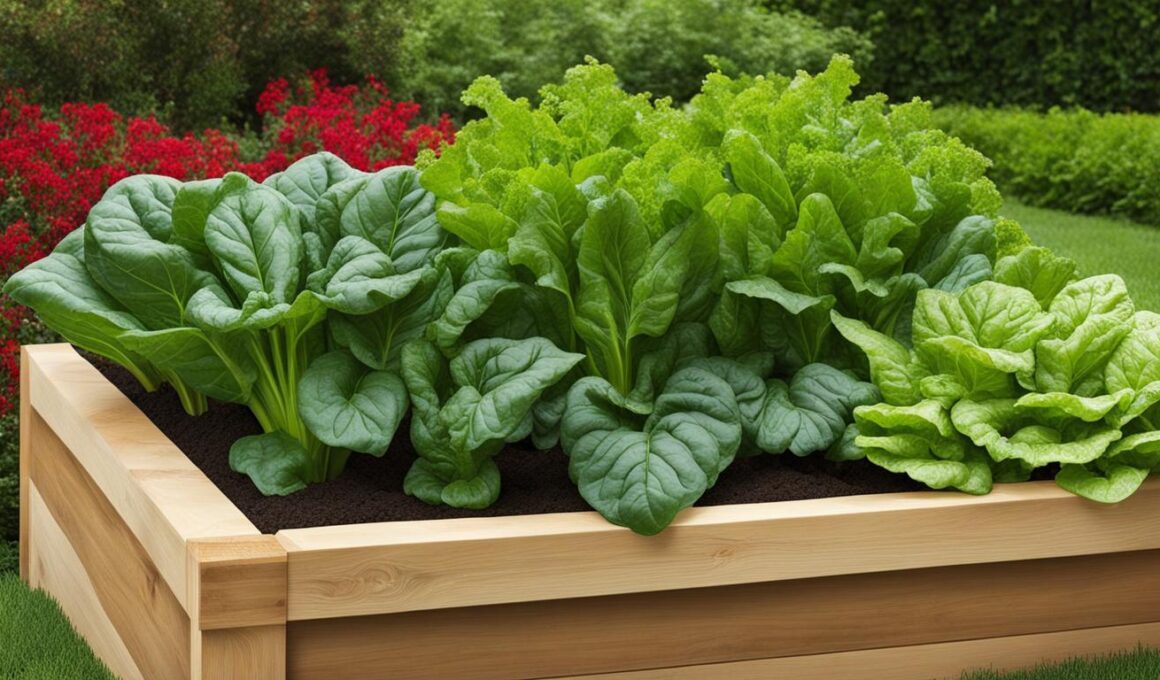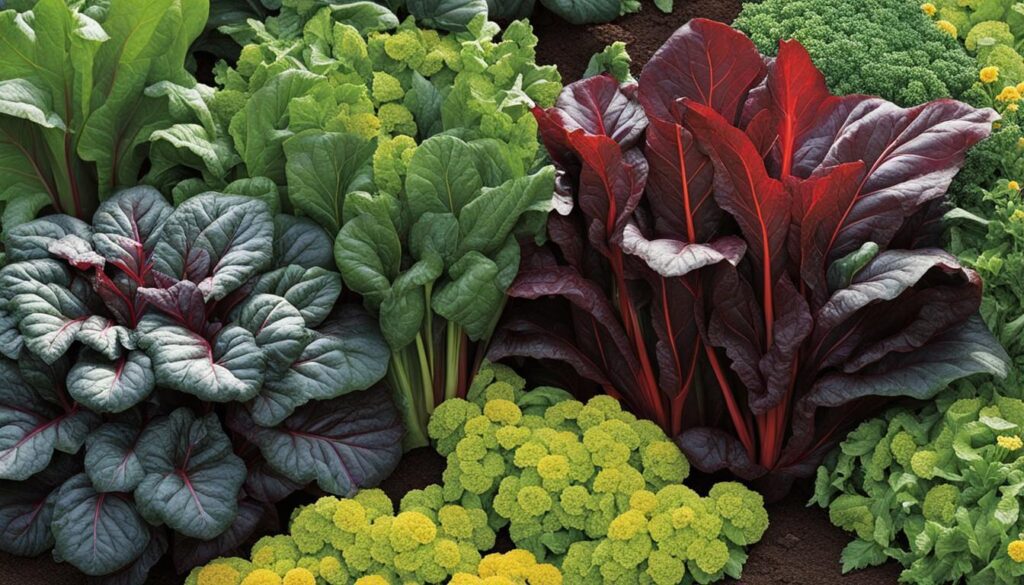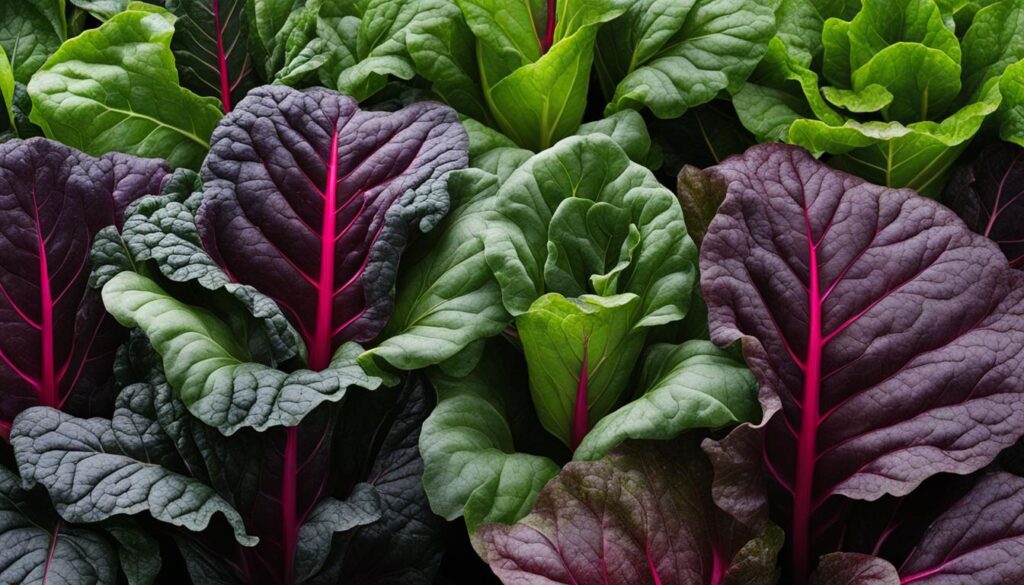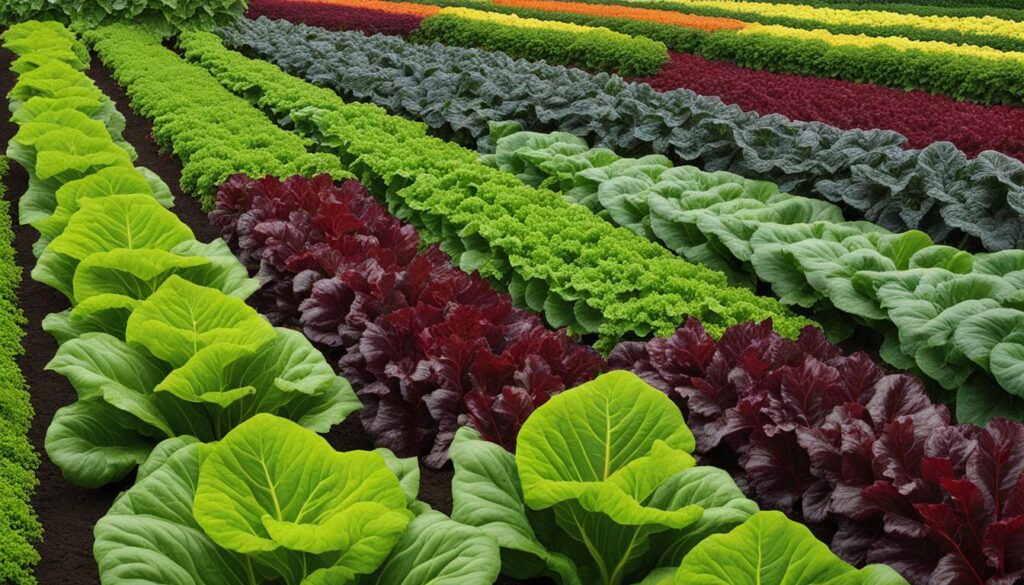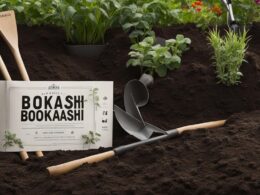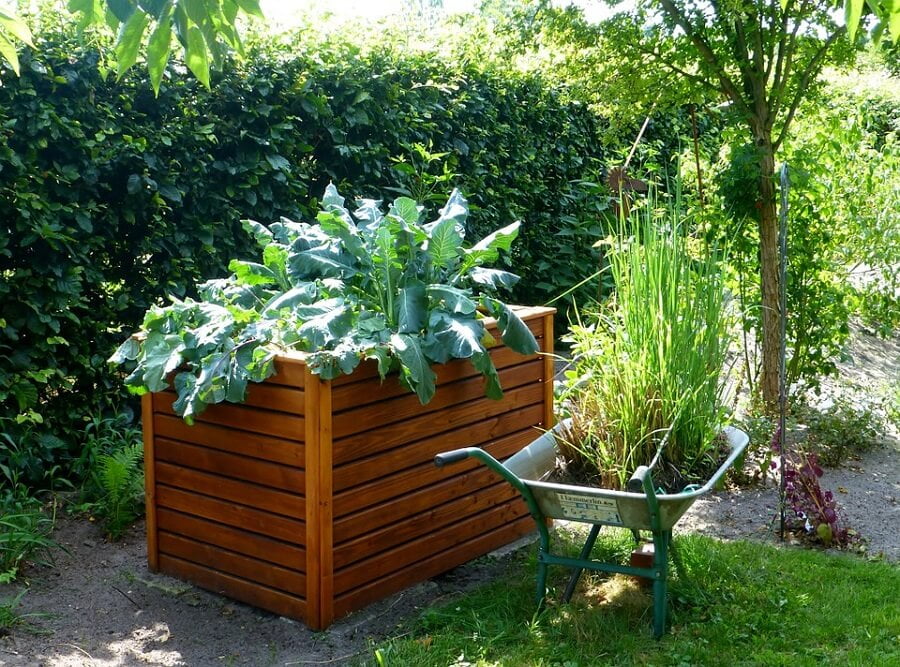Swiss chard, a leafy green renowned for its vibrant and colorful stems, is a versatile addition to both vegetable gardens and decorative flower beds. This cool-weather-loving plant can tolerate heat when adequately watered and flourishes in full sun during the spring and fall while accepting partial shade in the summer. As a non-root forming beet variety, it is crucial to keep Swiss chard distant from its beet relatives to minimize pest issues. Companion planting, the practice of growing different plants together, benefits chard by improving soil health, controlling pests, and optimizing limited space. Thanks to its resilience to pests like aphids and other insects, along with its biennial nature, Swiss chard is an ideal candidate for companion planting. Learn how to integrate companion planting with Swiss chard to unlock the full potential of your garden.
Key Takeaways
- Swiss chard is a versatile plant suitable for co-planting in vegetable gardens and decorative flower beds.
- Companion planting Swiss chard can improve soil health, control pests, and optimize limited space in your garden.
- Swiss chard is compatible with various plants, including beans, cabbage family members, celery, herbs, and ornamentals.
- Avoid planting cucumbers, melons, corn, and potatoes near Swiss chard due to competition and potential pest issues.
- Nutritional symbiosis among companion plants plays a crucial role in maintaining a healthy and balanced garden ecosystem.
- Companion planting can help you create visually appealing garden spaces and protect Swiss chard from pests and diseases through natural means.
The Art and Science of Companion Planting with Swiss Chard
Complementing the science of companion planting strategies, Swiss chard contributes the art of beautiful colors to the garden while benefiting from the surrounding biodiversity. Pairing Swiss chard with suitable companions can reduce pest populations, conserve moisture, and help with nutrient uptake by exploiting the unique needs and features of different plants. This practice supports the holistic growth of the garden ecosystem, resulting in a sustainable and productive space that employs natural pest control and soil enrichment techniques.
Mixed planting offers a number of Swiss chard garden benefits, including:
- Reduced pest populations
- Improved moisture retention
- Enhanced nutrient uptake
- Increased visual appeal
When choosing companion plants for Swiss chard, it is important to consider the varied needs and characteristics of each plant. Proper selection ensures that all plants have the opportunity to grow and flourish without adversely impacting one another. A well-designed mixed planting will capitalize on the mixed planting benefits offered through the strategic use of various plant species.
There are a few key elements to consider when creating your Swiss chard companion planting strategy, such as:
- Choosing plants that have a symbiotic relationship with chard
- Understanding the nutritional needs and contributions of each plant
- Accounting for each plant’s growth characteristics and requirements
- Assessing any potential pest issues
| Symbiotic Relationship | Nutritional Contributions | Growth Characteristics | Pest Control |
|---|---|---|---|
| Beans provide nitrogen for the chard, reducing the need for fertilizers | Beans are nitrogen-fixing plants, benefiting chard and overall soil fertility | Complementary growth patterns help optimize space, water, and nutrient usage | Various plant species can attract or repel pests, enhancing natural pest control |
By incorporating these principles into your companion planting strategy, you can establish a Swiss chard garden that is visually stunning, productive, and environmentally sustainable.
Boosting Swiss Chard Growth: Best Companion Plants to Consider
Creating an optimal growth environment for Swiss chard involves selecting the right companion plants with diverse root systems that can enhance each other’s growth habits. Three key groupings of plants stand out as ideal companions for Swiss chard: beans, cabbage family vegetables, and celery.
Beans: The Nitrogen-Enriching Companions
Nitrogen-fixing beans are an excellent companion for Swiss chard due to their ability to improve soil fertility. Interplanting Swiss chard with both bush and pole beans creates a synergistic effect, enhancing the growth of each plant. Pole beans can provide welcome shade for Swiss chard during hot summer months while bush beans maintain a low profile, reducing the chance of shading out chard. This Swiss chard bean companions relationship is further supported by their shared preference for moist soil conditions.
Cabbage Family: Shared Growth Conditions for Success
Members of the cabbage family, including cabbage, broccoli, kale, kohlrabi, turnips, and radishes, work well as companions for Swiss chard due to their similar growth habits and root depths. Cabbage family companion planting with Swiss chard is particularly effective due to minimal competition for water and nutrients; chard’s roots extend deeper than those of many cabbage family vegetables. Additionally, the large leaves of cabbage family plants provide shade, helping to keep the soil moist. This mutually beneficial relationship can enhance the size and quality of both crops.
- Swiss chard
- Cabbage
- Broccoli
- Kale
- Kohlrabi
- Turnips
- Radishes
Celery and Chard: A Symbiotic Growth Duo
Celery’s compact growth pattern and shallow root system make it an ideal companion for Swiss chard. The chard-celery gardening compatibility is underpinned by their shared preference for ample water and thriving in spring and fall conditions. With both Swiss chard and celery gaining a sweeter flavor as cooler weather approaches, this pairing is perfect for gardeners looking to optimize their efforts while enjoying maximum harvests.
| Plant | Root Depth | Water Preference | Season |
|---|---|---|---|
| Swiss Chard | Deep | Ample Water | Spring and Fall |
| Celery | Shallow | Adequate Water | Spring and Fall |
Herbs and Chard: Natural Pest Control Allies
Many herbs, such as mint, cilantro, and chamomile, work well with Swiss chard, serving as natural pest deterrents while attracting beneficial insects. These herbal companions contribute to a healthy and balanced garden ecosystem while enhancing Swiss chard growth.
Mint is particularly noted for repelling aphids and rodents, however, its aggressive growth warrants container planting to restrict its spread. Cilantro contributes by attracting helpful predatory insects and deterring flea beetles. Chamomile, recognized for its aphid-repelling scent, can be better managed as a container plant in certain climates and offers drought tolerance once established.
How Herbs Deter Pests and Promote Swiss Chard Growth
| Herb | Pest Deterrent | Additional Benefits |
|---|---|---|
| Mint | Aphids and rodents | Container planting limits aggressive growth |
| Cilantro | Flea beetles | Attracts helpful predatory insects |
| Chamomile | Aphids | Drought tolerance once established |
Integrating these beneficial herbs for Swiss chard not only improves the overall garden health, but it also provides an aesthetically pleasing environment for you and your plants. Some of the natural pest deterrents include:
- Mint: Repels aphids and rodents, decreasing the likelihood of plant damage.
- Cilantro: Invites predatory insects like ladybugs and lacewings, which help target pests that may harm Swiss chard.
- Chamomile: Its scent repels aphids, a common pest of Swiss chard, while also being drought-tolerant after establishment.
In conclusion, the use of beneficial herbs for Swiss chard as companion plants can help create a thriving, healthy garden ecosystem by attracting helpful insects and deterring harmful pests. Incorporating these herbal companions not only protects your Swiss chard, but it also enriches the garden visually and aids in overall plant health.
Ornamentals and Swiss Chard: Aesthetic Matches Made in Heaven
Choosing the right ornamental companion plants can create a visually stunning and functional garden centered around Swiss chard. By incorporating pest-repellent and pest-trapping ornamentals, you will not only enhance the aesthetic appeal of your garden but also improve the overall health of your plants.
Marigolds: Dual Purpose Beauty and Pest Deterrence
Marigolds, known for their vibrant blooms and compact growth, not only provide visual appeal when paired with Swiss chard but also deliver essential pest control benefits. The pest-repellent flowers are known to ward off root-knot nematodes, while effectively serving as a trap crop for aphids. Moreover, the shallow root systems of marigolds ensure minimal competition with Swiss chard, allowing both plants to flourish without hindering each other’s growth.
Nasturtiums: Vibrant Trap Plants for Pests
Nasturtiums offer a dazzling addition to your garden while acting effectively as a trap crop for aphids, which are often attracted to chard. When paired with Swiss chard, nasturtiums also invite beneficial insects, thus promoting natural pest control and overall garden well-being. By planting nasturtiums as nasturtiums Swiss chard companions, you can achieve both a visually pleasing garden display and practical pest management near your Swiss chard beds.
Below is a summary of the benefits of these two ornamental companion plants:
| Ornamental Companion Plant | Visual Appeal | Pest Control Benefit |
|---|---|---|
| Marigolds | Bright blooms, compact growth | Repel root-knot nematodes, trap crop for aphids |
| Nasturtiums | Vibrant colors, beautiful foliage | Trap crop for aphids, attract beneficial insects |
Investing in ornamental companion planting can provide numerous benefits not just Swiss chard but to your entire garden. By selecting the right companions such as marigolds and nasturtiums, you will be able to create a visually appealing, balanced, and productive garden ecosystem that thrives while minimizing the need for chemical pest control methods.
Bad Company: What Not to Plant With Swiss Chard
While Swiss chard is generally amicable with a variety of plants, there are certain incompatible Swiss chard plants to avoid as neighbors. These adverse garden companions can lead to competition for nutrients and the potential to attract harmful pests. It is crucial to consider these Swiss chard gardening cautions for a successful and thriving garden.
- Cucumbers and Melons: Both of these vining plants can compete with chard for nutrients and water, causing stunted growth and reduced yields in your chard plants.
- Corn: Corn’s tall stalks create shade, which may hinder chard’s growth. Furthermore, they can attract pests that may damage Swiss chard plants.
- Potatoes: Potatoes, in particular, should be kept away from Swiss chard as they compete for the same nutrients in the soil and can harbor pests that cause harm to chard.
- Most Herbs: The majority of herbs should not be planted near chard, as they might not pair well together. Exceptions include mint and the beneficial herbs mentioned in earlier sections.
Here is a summary of plants to steer clear from when planting Swiss chard:
| Incompatible Plant | Reason for Incompatibility |
|---|---|
| Cucumbers | Nutrient and water competition |
| Melons | Nutrient and water competition |
| Corn | Shading and pest attraction |
| Potatoes | Nutrient competition and pest attraction |
| Most Herbs | Poor pairing and potential nutrient competition |
By being mindful of these incompatible plants and avoiding them in your garden, you can ensure a thriving Swiss chard crop and a harmonious garden ecosystem.
Understanding the Nutritional Symbiosis in Swiss Chard Companions
The nutritional symbiosis of Swiss chard with its companion plants can be a critical aspect of a healthy garden ecosystem. By carefully selecting plants with varying nutrient needs and contributions, such as nitrogen-enriching legumes or deep-rooted vegetables that can draw up different nutrients, gardeners can maintain soil fertility and promote robust chard growth. This understanding of the nutrient dynamics among companion plants is key to sustaining a balanced and productive garden.
Some strategies to optimize the Swiss chard nutrient uptake and the impact of companion plant synergy on overall soil health and chard vitality include:
- Integrating nitrogen-fixing plants, such as beans and peas, which can improve soil fertility and provide essential nutrients for chard.
- Pairing chard with plants that have complementary root depths to reduce competition for nutrients and water.
- Incorporating herbs and ornamental flowers, which can both attract beneficial insects and repel harmful pests, contributing to a stronger garden ecosystem.
To further illustrate the symbiotic relationships between Swiss chard and other plants in terms of nutrient uptake, the table below presents some examples of common companion plants for chard and the benefits they provide in a garden setting.
| Companion Plant | Nutrient Benefits |
|---|---|
| Beans | Nitrogen-fixing capabilities; improves soil fertility, supports chard growth |
| Cabbage Family | Complementary growth habits and root depths; minimal competition for water and nutrients |
| Herbs (e.g., mint, cilantro, chamomile) | Attract beneficial insects; deter pests; improve overall garden health |
| Ornamentals (e.g., marigolds, nasturtiums) | Deter pests; provide visual appeal; contribute to garden vitality |
By understanding and leveraging the nutritional symbiosis between Swiss chard and its companion plants, gardeners can create a thriving, productive, and visually appealing environment that promotes soil health and optimizes Swiss chard growth.
Can I also use companion planting for tomatoes in raised beds like I do with Swiss chard?
Yes, you can definitely use companion planting with tomatoes in raised beds. Swiss chard makes a great companion plant for tomatoes, as it can help deter pests and attract beneficial insects. By including Swiss chard in your raised bed with tomatoes, you can create a more efficient and productive garden.
Maximize Garden Harmony with Swiss Chard Companion Planting
A well-curated companion planting guide is essential for successful Swiss chard gardening. By carefully selecting compatible vegetables, herbs, and ornamentals, you can create a vibrant and productive garden ecosystem that capitalizes on natural processes. Swiss chard benefits from enhanced growth, improved pest control, and soil health when planted alongside supportive neighbors.
Key companions to consider in your garden include nitrogen-fixing beans, cabbage family vegetables, and celery. These companions not only share harmonious growth habits but also contribute varying nutrient needs and root systems that promote soil health and chard growth. Herbs, such as mint, cilantro, and chamomile, serve vital pest control functions, while ornamentals like marigolds and nasturtiums add visual appeal and offer additional pest management benefits.
Be mindful of plants to avoid, such as cucumbers, melons, corn, and especially potatoes, to prevent competition or pest issues. By implementing these strategies to maximize garden harmony, you’ll be well-equipped to cultivate beautiful, thriving Swiss chard at the core of your horticultural endeavors.





